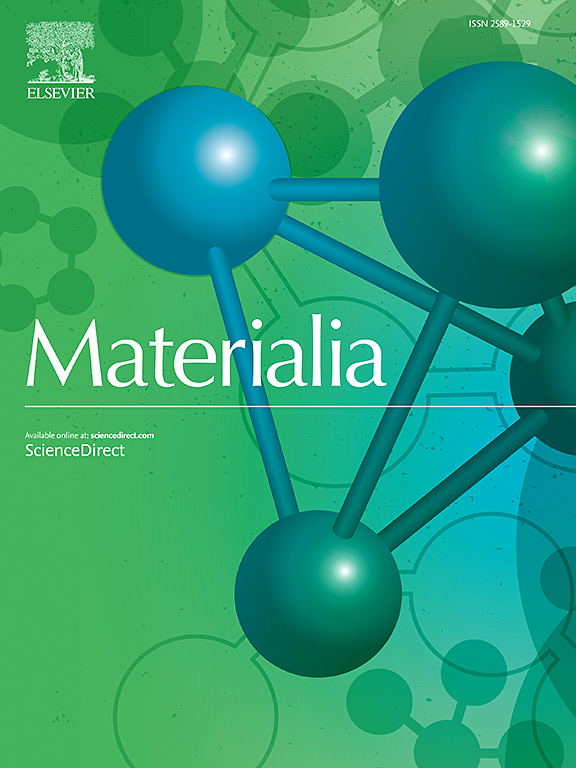激光定向能沉积是一种很有前途的异种连接技术——以cocrfeni基填料制备SS316L和IN718为例
IF 2.9
Q2 MATERIALS SCIENCE, MULTIDISCIPLINARY
引用次数: 0
摘要
异种金属连接广泛应用于汽车和航空航天工业,以减轻重量和合金集成。本研究采用激光定向能沉积(L- ded)方法,将CoCrFeNi高熵合金(HEA)和CoCrFeNi +TiB2作为填料连接不锈钢316 L和Inconel 718。L-DED中的快速冷却和局部熔化抑制了混合、相互扩散和大脆性金属间化合物的形成,导致热影响区可以忽略不计。在CoCrFeNi HEA填料中加入tib2颗粒,细化了组织,提高了力学性能。tib2作为反应性孕育剂,在此过程中分解形成富cr和富ti的枝晶间细胞结构,提高了焊接区的硬度和抗拉强度,并提高了连接件的延展性。L-DED和反应性孕育剂的结合使用显示了扩大不同金属连接材料选择的潜力,为先进的工程应用提供了更坚固、更坚固的焊接区域。本文章由计算机程序翻译,如有差异,请以英文原文为准。

Laser-directed energy deposition as a promising dissimilar joining technique: A case study on SS316L and IN718 with CoCrFeNi-based fillers
Dissimilar metal joining is widely used in the automotive and aerospace industries for weight reduction and alloy integration. In this study, CoCrFeNi high-entropy alloy (HEA) and CoCrFeNi +TiB2 were employed as fillers to join stainless steel 316 L and Inconel 718 using laser-directed energy deposition (L-DED). The rapid cooling and localized melting in L-DED suppressed intermixing, interdiffusion, and the formation of large brittle intermetallics while leading to negligible heat-affected zone. The addition of TiB₂ microparticles to the CoCrFeNi HEA filler refined the microstructure and improved mechanical properties. TiB₂, acting as a reactive inoculant, decomposed during the process to form Cr-rich and Ti-rich inter-dendritic cellular structures, enhancing the hardness and tensile strength of the weld zone, and the ductility of the joined parts. The combined use of L-DED and reactive inoculants demonstrates the potential to expand material options for dissimilar metal joining, enabling stronger and tougher weld zones for advanced engineering applications.
求助全文
通过发布文献求助,成功后即可免费获取论文全文。
去求助
来源期刊

Materialia
MATERIALS SCIENCE, MULTIDISCIPLINARY-
CiteScore
6.40
自引率
2.90%
发文量
345
审稿时长
36 days
期刊介绍:
Materialia is a multidisciplinary journal of materials science and engineering that publishes original peer-reviewed research articles. Articles in Materialia advance the understanding of the relationship between processing, structure, property, and function of materials.
Materialia publishes full-length research articles, review articles, and letters (short communications). In addition to receiving direct submissions, Materialia also accepts transfers from Acta Materialia, Inc. partner journals. Materialia offers authors the choice to publish on an open access model (with author fee), or on a subscription model (with no author fee).
 求助内容:
求助内容: 应助结果提醒方式:
应助结果提醒方式:


